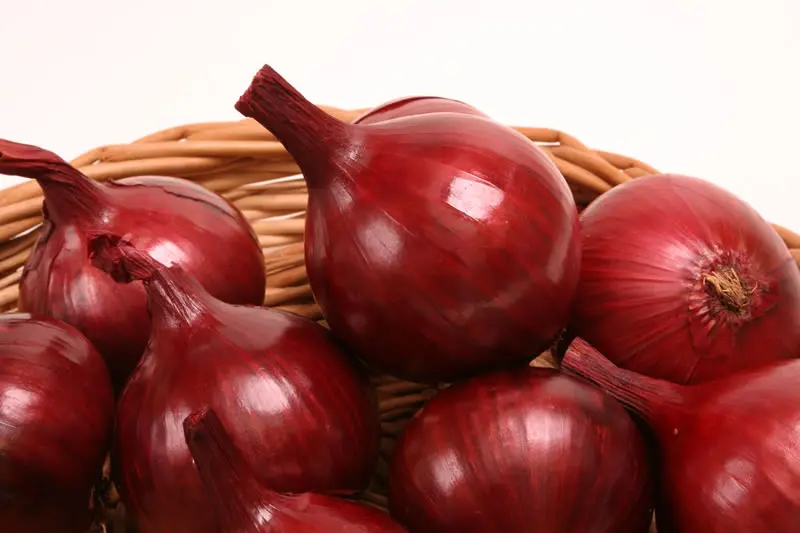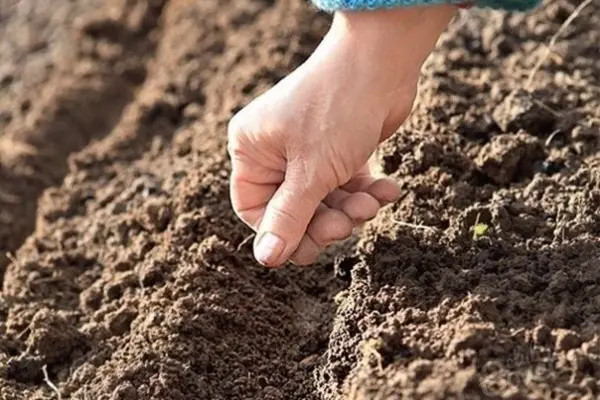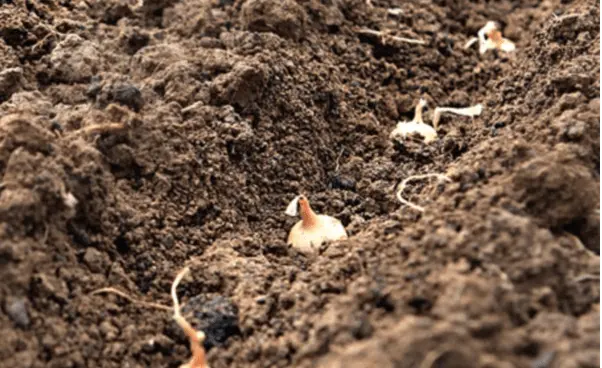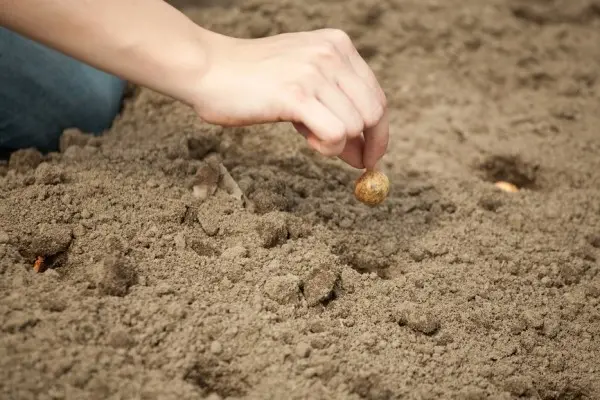Contents
Planting onions before winter is a relatively new way for most gardeners, which some of them have not even heard of before. Since onions can be called a slightly capricious culture – arrows appear on it in dry weather, and in wet weather it can begin to rot – planting before winter is considered today a productive way to grow this root crop. The main thing is to know everything about the time of planting, onion varieties, as well as subsequent watering and fertilizing the site. In autumn, you can sow and plant different types of onions – these are batun, shallots, and nigella.
Suitable varieties
In order to properly plant onions before winter, you need to decide on a dry and sunny place in the garden. It is good to plant onions after crops such as potatoes, tomatoes, legumes. When you decide to plant onions before winter, we advise you to prefer sharp varieties such as Stuttgarter or Centurion. Bessonovsky, Odintsovets, Skvirsky, Spassky, Pogarsky, Danilovsky, Strigunovsky varieties are also suitable.
Black onion seeds are called onion seeds, from which sevok is obtained. They are often sown before winter, covering with a film or non-woven fabric. The following varieties are well grown with blackies: Stuttgarter, Bessonovsky, Strigunovsky. Shallots are planted in the fall for an early feather. Winter shallots can be harvested at least 2 weeks earlier than the earliest onions. Batun, like shallots, is grown for the sake of a feather, its seeds are sown in the fall, and in the spring it is quite possible to transplant to another place, it tolerates transplants perfectly. Batun is not only a healthy vegetable, it perfectly decorates the garden with its family greens.
Depending on the size of the bulb, the varieties can be divided into the following groups – the first (the bulb reaches a diameter of up to one and a half cm), the second (up to three cm), the third (more than three cm) and oatmeal (bulbs having a non-standard size , the diameter is about one cm). The best onions grow if you plant onions of the first type or oatmeal before winter. It is recommended to plant such a set to a depth of about 2 – 3 cm in special grooves. In order to get a green feather early, we advise you to plant sevok before winter, belonging to the second group. When it turns into arrows in the summer, you won’t be able to wait for a turnip from it. Not so long ago, special varieties of winter onions also appeared – such as Radar, Shakespeare, Kip Well. You can plant several varieties, if possible, so that when you do this next season, you can already accurately choose the variety that suits you – in terms of taste, germination, resistance to winter conditions, and the complexity of care during the ripening period of the crop.
It is recommended to plant such a set to a depth of about 2 – 3 cm in special grooves. In order to get a green feather early, we advise you to plant sevok before winter, belonging to the second group. When it turns into arrows in the summer, you won’t be able to wait for a turnip from it. Not so long ago, special varieties of winter onions also appeared – such as Radar, Shakespeare, Kip Well. You can plant several varieties, if possible, so that when you do this next season, you can already accurately choose the variety that suits you – in terms of taste, germination, resistance to winter conditions, and the complexity of care during the ripening period of the crop.
Time to land
It is customary to plant onions in the same way as garlic, when the first frosts have not yet come. The optimal temperature for planting onions before winter is the end of the last month of autumn. For planting onions before winter, zoned varieties have proven themselves best, the dormant period of which is the second half of December – the first half of January. Southern varieties should not be taken for planting before winter.
When choosing the timing of planting a crop, you need to look at the weather forecast for your region. When the onion is planted correctly and on time in the way before winter, it will quickly and well be able to take root on the site. As a rule, gardeners recommend planting this crop before winter when bulbous flowers, such as daffodils and tulips, will be planted. Bulbs of sets are quite difficult to save until spring, as they are able to dry out. Therefore, they are in a hurry to plant them in the ground before winter. It is in the ground that the sowing can have a great winter and in late July – early August will give a large crop of turnips.
Blackies are sown at the end of autumn, but before frost, while there is still moisture in the soil. In general, all onions are sown before winter or planted at a time when all work in the garden has already been completed, and the beds are prepared in advance. After harvesting potatoes, tomatoes and cabbage, the garden is dug up and fertilized, it can be compost or humus, onions do not like fresh manure. Such prepared beds rest until the end of autumn, and then Stuttgarter and other nigella, batun and shallots are planted or sown in them. Stuttgarter grows well in the beds after legumes, cucumbers and potatoes.
Technique
Before planting, the seedlings must be sorted. It is best to do this in dense material or cardboard, where a hole about a centimeter in size is made. All bulbs that can pass through it should be set aside for planting. To get a good harvest, it is recommended to treat the onion before planting with a warm, weak solution of copper sulfate. And so that the vegetable does not start arrows, you need to lower the bulbs for a minute in water that has a temperature of about 60 degrees. There is a more modern way – wrap the onions with a cloth, put them in a glass vessel and heat them for about two minutes in the microwave, and then treat them with a growth stimulator.
And so that the vegetable does not start arrows, you need to lower the bulbs for a minute in water that has a temperature of about 60 degrees. There is a more modern way – wrap the onions with a cloth, put them in a glass vessel and heat them for about two minutes in the microwave, and then treat them with a growth stimulator.
When the planting material has already been selected, holes should be made on the prepared plot of land, the depth of which should not exceed 4 cm. If you plant the onion higher, then with the onset of spring it will stick out of the ground. The distance between the rows should be about 20 cm. After planting the bulb, the ground should be patched up. Since the winter in each region is different, it is necessary to take into account the weather conditions in your own. If there is a lot of snow and it does not melt for a long time, then this will be a great help for getting a good onion harvest this season.
If the winter is not snowy, then after planting the soil must be mulched with a layer of humus or peat, the thickness of which will be approximately 2 cm.
In this case, the earth will not lose moisture, and the sevok will take root well. With the approach of the first frosts on the beds, we advise you to sketch the foliage or lay out the straw. When spring comes, the soil will thaw, and all this flooring will need to be removed from the garden. Before the leaves appear, it will be possible to feed the soil with fertilizer in the form of fermented manure or bird droppings. Shallots are planted deep, 10 cm, moreover, its neck should be covered with 2-3 cm of soil. It is good to leave a large distance between the onions – 8-10 cm, so that later they will not be disturbed and give the opportunity for the families of this onion to grow.
Chernushki are laid to a depth of 3-4 cm (during spring sowing they are generally not lowered deeper than 2-3 cm), they can be sown densely, and in the spring, with the appearance of the first leaves, carefully thin out. The first time you need to pluck the bulbs so that there are 2-3 m left between them – the first vitamins will fall on the table, and the remaining plants will have the opportunity to grow bulbs.
After the second thinning, 5-8 cm should remain between them. And if any variety (for example, Stuttgarter) is grown for bulbs, then up to 10 cm. Batun onions are planted with the onset of frost to -3o. It is sown shallowly by 2-3 cm, there should be a distance of 2-3 cm between the seeds, and up to 20 cm between the rows. After sowing the batun, the soil is compacted, and mulched with humus or peat from above. Batun should germinate only in spring, if this happens in winter, the onion will simply freeze. And in April, to accelerate growth, you can cover it with a film or agro-cloth.
Watering and fertilizing
It is important for every gardener to know that onions are a crop that after planting is in great need of regular and sufficient watering. This is especially true in the first two and a half months after planting – May, June and the first half of July. In order to prevent the occurrence of such a nuisance as downy mildew, it is strictly forbidden to water the area with too cold water, the temperature of which does not exceed 18 degrees. Watering the area where the onions were planted before winter can and should be stopped only 15 to 20 days before the start of harvesting. Weeds should not be allowed to appear, which can create unnecessary moisture and ideal conditions for the development of fungal diseases. They should be removed from damp soil. If the onion grows on unweeded beds, then it will be very poorly stored. Every couple of weeks, you need to loosen the earth, especially for the period after watering and rains. Thus, it is possible to ensure normal access of air to the roots of the plant. At the time when the crop begins the growing season, it needs several top dressings, which are made with special phosphorus-potassium fertilizers. They will become faithful assistants of the root crop in the matter of ripening and subsequent normal storage. The first time fertilizers are applied when the leaves grow poorly. The second top dressing is recommended to be done 12 to 15 days after the first. It is also good to carry out the prevention of possible fungal diseases.
They should be removed from damp soil. If the onion grows on unweeded beds, then it will be very poorly stored. Every couple of weeks, you need to loosen the earth, especially for the period after watering and rains. Thus, it is possible to ensure normal access of air to the roots of the plant. At the time when the crop begins the growing season, it needs several top dressings, which are made with special phosphorus-potassium fertilizers. They will become faithful assistants of the root crop in the matter of ripening and subsequent normal storage. The first time fertilizers are applied when the leaves grow poorly. The second top dressing is recommended to be done 12 to 15 days after the first. It is also good to carry out the prevention of possible fungal diseases. To do this, 1 teaspoon of copper sulfate is diluted in 10 liters of water. You can also use copper chloride. This solution should be treated with leaves by spraying. If you choose varieties suitable for your area for planting before winter, correctly calculate the time for planting a crop, plant it in accordance with all generally accepted rules, and also carry out timely watering and fertilizing, then you can expect a good harvest.
To do this, 1 teaspoon of copper sulfate is diluted in 10 liters of water. You can also use copper chloride. This solution should be treated with leaves by spraying. If you choose varieties suitable for your area for planting before winter, correctly calculate the time for planting a crop, plant it in accordance with all generally accepted rules, and also carry out timely watering and fertilizing, then you can expect a good harvest.
Batun loves sandy or loamy soil with humus, abundant watering and loosening. After the appearance of 3-4 leaves, it must be fed with rotted manure and mineral fertilizers after watering or simultaneously with it. Shallots also love moisture and loosening between rows. During the season, you need to produce 2-3 plentiful waterings and several top dressings. Shallots are fertilized with diluted mullein or chicken manure; instead, complex mineral-organic fertilizer can be applied.
Stuttgarter grows well if it is weeded and fed with complex fertilizer during the period of intensive growth, this is approximately until the beginning of July, and then watering and fertilizing are stopped. As soon as the leaf part begins to turn yellow and lay on the ground, it is time to remove the Stuttgarter onion, otherwise the leaves will begin to rot, and the bulb will immediately rot behind them.
Blackies grown for sevka are fed quite a bit after thinning, watering with mullein or slurry diluted in water. But many gardeners believe that nigella grows well even without top dressing. It is the autumn sowing of onions that can provide early vitamin greens, for this it is worth the risk, especially since you can cover plantings and crops with peat or hay.
Video “Rules for planting onions for the winter”
The record shows which varieties of onions you need to choose if you are going to plant onions for the winter and how to properly plant and care for them.










 If the winter is not snowy, then after planting the soil must be mulched with a layer of humus or peat, the thickness of which will be approximately 2 cm.
If the winter is not snowy, then after planting the soil must be mulched with a layer of humus or peat, the thickness of which will be approximately 2 cm.